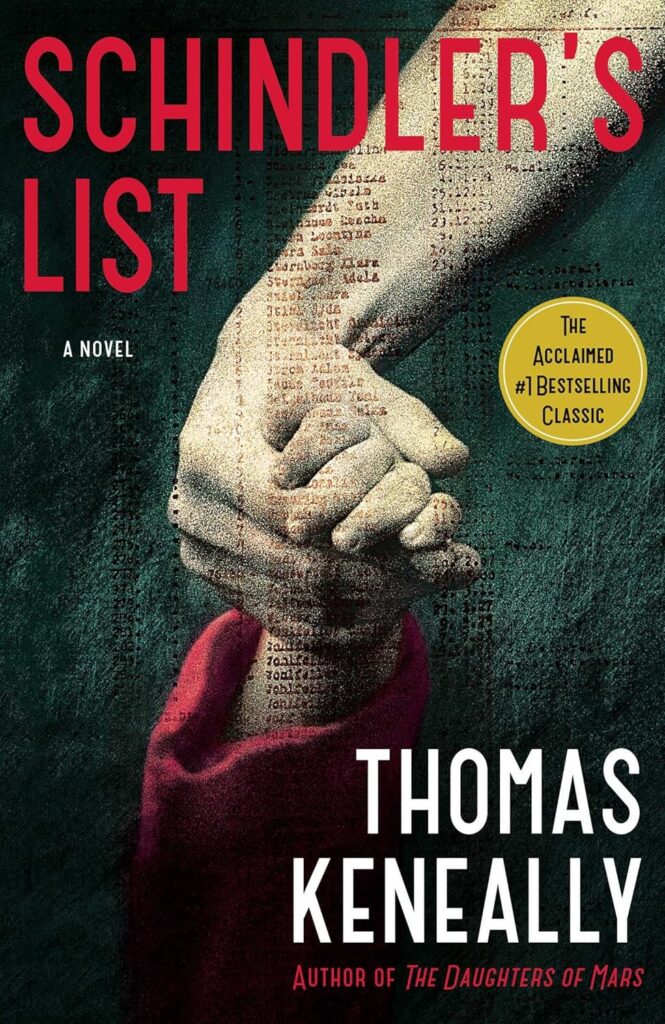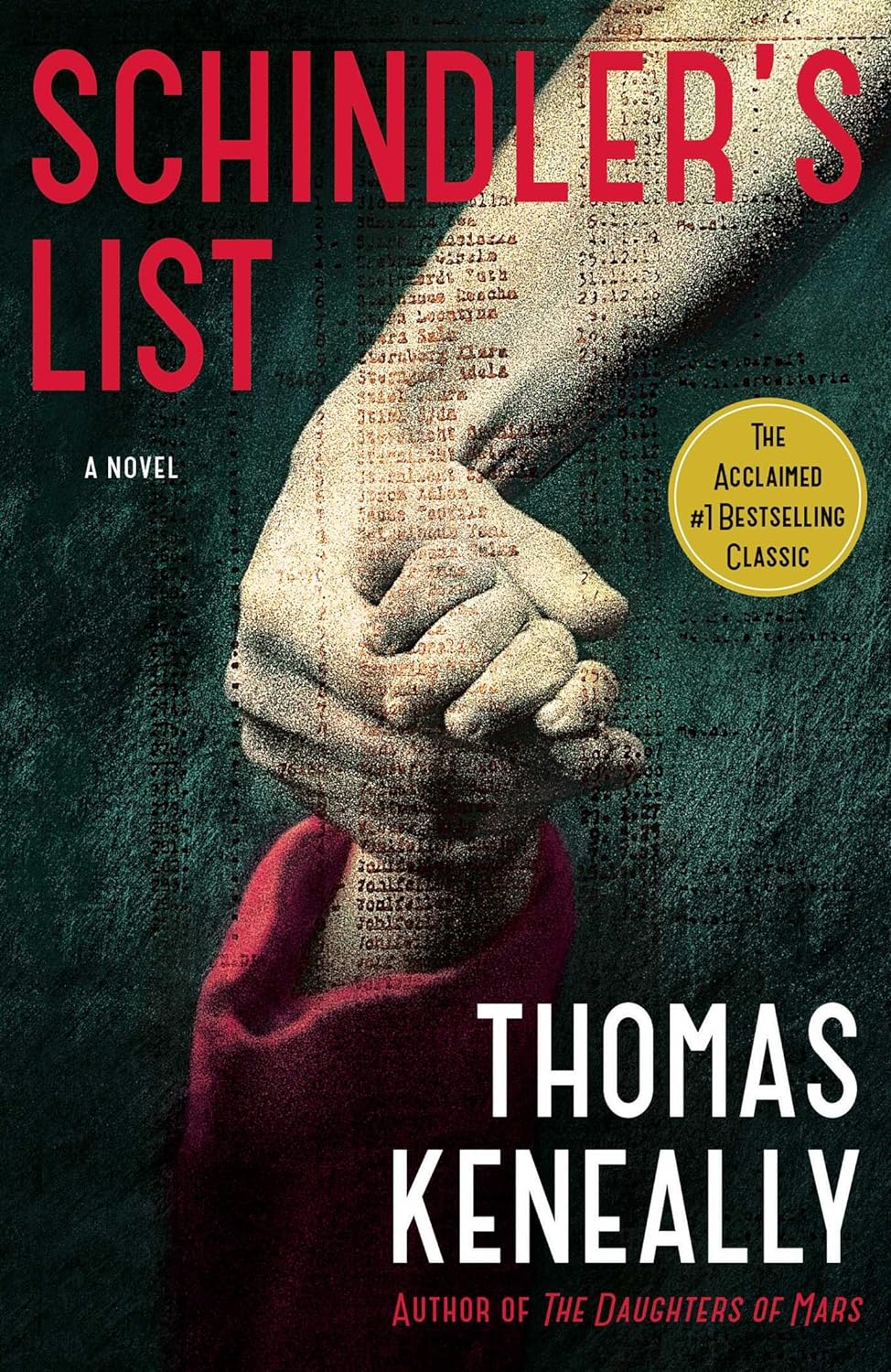We are from Ukraine ![]()

Introduction:
Before I turned the first page of the Schindler’s List book, my expectations were a mix of anticipation and solemnity, knowing I was about to embark on a journey through one of history’s darkest chapters. This book, penned by the acclaimed author Thomas Keneally, is not just a work of literature; it’s a poignant document that brings to light the grim realities of the Holocaust through the lens of an unlikely hero, Oskar Schindler. The historical significance of the Schindler’s List book cannot be overstated. Keneally’s meticulous research and compelling narrative bring to life the story of a man who risked everything to save others, offering a unique perspective on the human capacity for courage and compassion amidst the horrors of World War II. As I prepared to dive into the Schindler’s List book summary I was acutely aware of the responsibility to convey the depth and power of this exceptional story.
Overview of ‘Schindler’s List’
The Schindler’s List book, a profound narrative set against the harrowing backdrop of World War II, chronicles the heroic efforts of Oskar Schindler, a German businessman who became an unlikely savior for more than a thousand Jewish refugees. The book intricately details Schindler’s transformation from a profit-driven entrepreneur to a humanitarian, driven by a relentless determination to save lives at great personal risk. Through the Schindler’s List book summary, we explore the grim reality of the Holocaust, the ghettos, and the brutal labor camps, against which Schindler’s acts of bravery shine as a beacon of humanity. Key characters, including Itzhak Stern, Schindler’s Jewish accountant who becomes a crucial ally in his mission, and Amon Goeth, the merciless Nazi commandant, are vividly brought to life, adding depth to this compelling historical narrative. The Schindler’s List book is not just a recount of historical events; it’s a testament to the indomitable spirit of those who fought against oppression, making it a crucial subject for my Schindler’s List book review.
The Author’s Craft
Thomas Keneally’s writing style in the Schindler’s List book masterfully blends meticulous historical research with the compelling drive of narrative fiction, creating a work that is both educational and profoundly moving. His approach to recounting the factual events of Oskar Schindler’s life and the Holocaust is unique; Keneally uses a novelist’s eye to focus on the human elements, weaving a story that captures the complexity of human morality in times of unimaginable crisis. The Schindler’s List book stands out for its detailed portrayal of characters and settings, bringing the past vividly to life through descriptive prose that engages the reader’s emotions and intellect.
The research process Keneally underwent for the Schindler’s List book was extensive. He delved into historical documents, survivor testimonies, and Schindler’s own archives to ensure the authenticity and accuracy of the narrative. This dedication to factual integrity is evident throughout the book, providing a solid foundation for the Schindler’s List book summary. Keneally’s methodical yet empathetic storytelling invites readers to understand the depth of Schindler’s impact, making “Schindler’s List” not only a testament to the past but also a beacon of hope and humanity.
Themes and Messages
In the Schindler’s List book, the themes of heroism, the human capacity for both good and evil, and the importance of individual action are woven throughout the narrative, providing profound reflections on the nature of humanity. This book illuminates the remarkable story of Oskar Schindler, a figure of complex morality who emerges as a beacon of heroism amidst the darkness of the Holocaust. Through the detailed “Schindler’s List book summary,” we uncover the nuanced portrayal of how one individual’s choices can lead to the salvation of many lives, challenging the notion that a single person’s actions are insignificant in the grand scheme of historical events.
The juxtaposition of good and evil within the Schindler’s List book serves as a powerful reminder of the choices we face daily. Keneally’s narrative prompts readers to contemplate the impact of their actions and the potential within each person to effect change. In my Schindler’s List book review, I reflect on how these themes resonate with contemporary issues such as social justice, moral courage, and the responsibility of individuals to stand against oppression. “Schindler’s List” is not just a book about the past; it is a call to acknowledge our capacity for both darkness and light and the imperative to choose wisely for the sake of humanity.
Emotional and Historical Impact
Reading the Schindler’s List book was an emotionally profound experience that left an indelible mark on me. The book masterfully captures the harrowing realities of the Holocaust, presenting moments of such intense humanity and inhumanity that they were both moving and challenging to confront. One of the most poignant aspects was witnessing the transformation of Oskar Schindler from a self-serving businessman to a savior, a journey that exemplifies the capacity for change and the power of compassion.
The Schindler’s List book serves an essential role in educating its readers about the Holocaust, not just as a historical event, but as a reminder of the depths and heights of human behavior. Through the detailed Schindler’s List book summary, we gain insights into the personal stories of those who lived through these dark times, highlighting the importance of individual stories in remembering history. In my Schindler’s List book review, I emphasize the book’s significance in not only shedding light on the past but also in its ability to inspire current and future generations. “Schindler’s List” underscores the necessity of remembering and learning from history, ensuring that the horrors of the Holocaust are never forgotten nor repeated.
Comparisons and Adaptations
The transition of the Schindler’s List book from book to screen under the direction of Steven Spielberg resulted in one of cinema’s most powerful and impactful films. While both the book and film share the core narrative of Oskar Schindler’s extraordinary efforts to save Jews during the Holocaust, Spielberg’s adaptation brings a visual and emotional intensity that complements Thomas Keneally’s detailed prose found in the Schindler’s List book. Notably, the film focuses more on the emotional journey of its characters, bringing a visceral sense of the fear, hope, and relief experienced by those Schindler saved. Some complexities and nuances of characters and events from the Schindler’s List book summary are streamlined for cinematic storytelling, which is a common necessity in film adaptations.
The film significantly amplified the book’s popularity, introducing the story of Oskar Schindler and his list to a broader audience. As a result, the public perception of Schindler shifted from that of a relatively obscure historical figure to a symbol of hope and courage during one of humanity’s darkest times. This shift has not only heightened interest in the Schindler’s List book review and discussions but also in Holocaust education in general, underscoring the power of storytelling across different mediums to honor the past and inspire future generations.
Conclusion:
The Schindler’s List book stands as a monumental work, bridging the gap between a historical document and a compelling narrative. Its portrayal of the Holocaust through the lens of Oskar Schindler’s life is both educational and deeply moving, offering insights into the complexity of human nature and the capacity for courage amidst despair. I wholeheartedly encourage readers of Book-Website to explore this book, not only for its historical significance but also for the profound personal reflections it inspires. Reading the Schindler’s List book provides a valuable perspective on one of history’s darkest times, emphasizing the importance of remembrance, understanding, and the power of individual action. This book is a must-read for anyone seeking to grasp the depth of human resilience and the impact of empathy and bravery.

